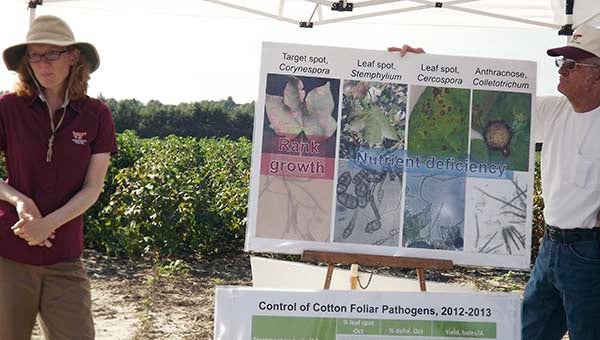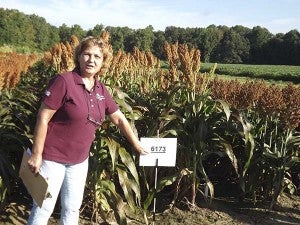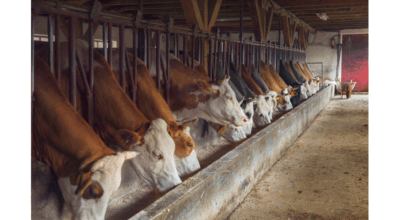Area farmers gain crop knowledge before harvest
Published 9:02 am Wednesday, September 17, 2014

Dr. Hillary Mehl, left, a plant pathologist at the Tidewater Agricultural Research and Extension Center in Suffolk, talks about diseases that can affect growth and nutrients in cotton. This took place during the annual Pre-Harvest Field Crops Tour at the test fields. — Stephen H. Cowles | Tidewater News
SUFFOLK—Farmers and researchers in Southampton, Isle of Wight, Suffolk and even beyond met last Thursday at the Tidewater Agricultural Research and Extension Center in Suffolk. They came for the annual Pre-Harvest Field Crops Tour to learn about issues from the people at the center who know whereof they speak.
Dr. Bo Zhang, for example, talked about high value food-grade soybeans. Among the differences with the feed grade variety, the soybeans for human food don’t require genetically modified organism traits, but should be of premium quality.

Dr. Maria Balota points to a variety type of sorghum. The plant is used as grain feed for livestock. — Stephen H. Cowles | Tidewater News
High quality protein, unsaturated fat, vitamin K, calcium and magnesium are elements that can contribute to the health of people who consume soybean-based foods, such as soymilk or tofu. Soybeans can also make soy bars, ice cream and yogurt.
Growers are working to meet the increasing global demand for the crop, and this can be profitable for American farmers, Zhang said, and added, “Growing speciality soybeans can make a lot of cents.”
Desired traits for these soybeans include small seeds, high sucrose, high water absorption and clear hilum, which is where the seed is attached to the rest of the plant.
Dr. Maria Balota spoke about sorghum production in Virginia. Standing before test crops, she drew people’s attention to what they should look for in the plant, which is used for feeding livestock. The plant’s reddish head, kernels, uniformity in size and chlorophyll are important. A short-statured head, Balota added, can be best for farmers. High stalks, for example, tolerate heat well, but are susceptible to damage from high winds coming from hurricanes.
She also said that through research and testing, growers are seeing better sorghum types that are more resistant to diseases. Later, Balota lectured briefly on peanut varieties, maturity and research updates.
Dr. Herbert Frame and student Austin Brown talked about soil fertility and nutrient management in cotton. Frame later discussed plant growth regulators in the crop.
Dr. Ames Herbert talked about insect management in both cotton and soybeans.
Elsewhere, Dr. Hilary Mehl spoke on disease management for cotton, soybeans and peanuts. Boll rot, leaf spots and nematodes are among the ills that can damage cotton. Target spot can affect rank growth, while leaf spots contribute to nutrient deficiency. Soybeans can be vulnerable to purple seed stain, frogeye leaf spot and rust.





